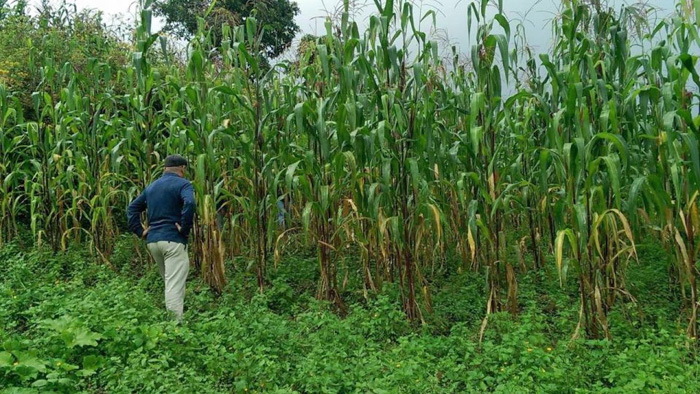Finally for a change, there are two little bits of good news on the environmental front. The first one needs a bit of background information: much of modern agriculture requires the addition of tons of nitrogen fertilizer, the manufacture of which consumes massive amounts of CO2-emitting fossil fuels, as opposed to the historical method of using manure. Leguminous plants, including beans, peas, clovers and even some trees like caragana, have the ability to utilize nitrogen from the atmosphere. They have nodules on their roots that contain colonies of special bacteria that fix atmospheric nitrogen and make it available to their host plant. The holy grail of plant geneticists world wide for many years has been to transfer this nitrogen-fixing bacteria to other plants, especially rice, wheat and corn, but so far even using genetic engineering they have been unsuccessful.
Now the good news: Although in its early stages, a variety of corn that grows in a little corner of Mexico can be grown year after year without the need for added fertilizer. This unique corn has aerial roots that can absorb moisture from the air, but when it is wet, these aerial roots ooze a gel that drips to the ground. Analysis of the gel shows that it includes nitrogen-fixing bacteria that fertilize the surrounding soil. Unfortunately this corn grows to enormous heights – up to 18 feet – and no doubt has a very long growing season. However plant breeders have crossed it with conventional northern varieties and hopefully in a few years we will have gel-dripping aerial roots on varieties suitable for northern climates, thus reducing the need for so much polluting man-made nitrogen fertilizer.
The second bit of good news concerns bees and plastic. One of the pests that torment bees and beekeepers is a moth, the larvae of which eat the beeswax honeycombs. A beekeeper in Spain, who is also a scientist, was picking off these wax-eating larvae and putting them in a plastic bag. Later the beekeeper/scientist noticed lots of holes in the plastic bag and wondered if the pesky larvae had nibbled the holes or had actually eaten the plastic. So, at Cambridge University in England they took some of the larvae, mashed them up and then spread the resulting goo onto a regular supermarket plastic bag. It ‘digested’ the plastic thus demonstrating that the wax-moth larvae produce an enzyme capable of breaking down plastic. The long-term aim is to transfer the enzyme-producing gene to bacteria, incorporate the bacteria into a liquid and use it to spray onto garbage dumps and other plastic accumulating places.
Hopefully both of these new developments will arrive before we totally ruin the planet.




